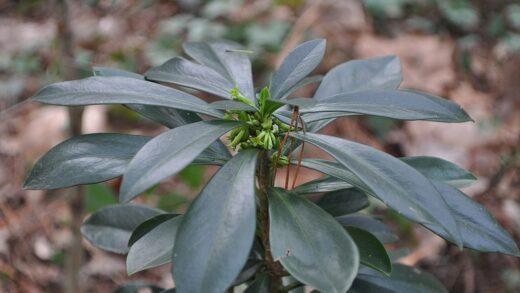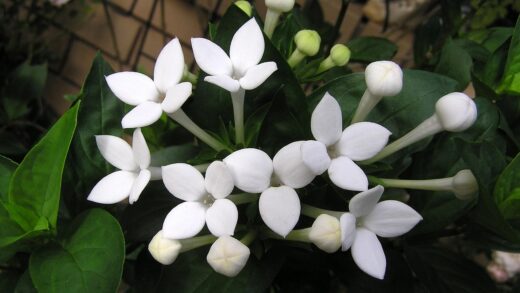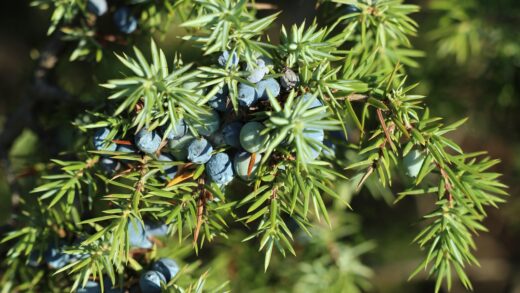The American Tulip Tree, known scientifically as Liriodendron tulipifera, is a deciduous tree native to North America with impressive ornamental value. Due to its characteristic, tulip-like flowers and uniquely shaped leaves, it is a popular park and solitary tree. With proper care, it can be the jewel of the garden for decades, providing shade with its broad crown and contributing to an increase in biodiversity. The key to successful cultivation lies in understanding the tree’s ecological requirements and performing professional care work in a timely manner. In this article, we will present in detail all the activities that are essential for this wonderful plant to thrive in its full glory.
Choosing the Right Location
Choosing the right location for the tulip tree is the fundamental condition for a long and healthy life. This tree species prefers sunny or at most, lightly semi-shady locations, where the foliage can be fully reached by light. Adequate sun exposure is essential for abundant flowering and the development of a symmetrical crown shape. In shady locations, the tree’s growth slows, its foliage becomes sparser, and the number of flowers can also significantly decrease. Another important aspect is to consider the final size of the tree, which can reach a height of up to 25-30 meters, which is why it must be planted at a sufficient distance from buildings and overhead power lines.
Regarding soil structure and pH, the tulip tree prefers deep, well-drained, and nutrient-rich soils. Ideal for it is a slightly acidic to neutral medium, with a pH value between 5.0 and 7.0. On excessively calcareous, alkaline soils, chlorosis, or yellowing, may appear on the leaves, which indicates a disturbance in iron and manganese uptake. Such problems can be prevented with proper soil preparation and, if necessary, by acidifying it. It tolerates standing water poorly, so the structure of overly compact, clayey soils must be improved by incorporating organic matter, such as compost or mature manure.
The microclimate is also a decisive factor for the development of the tulip tree. Although it is generally considered to be very hardy, young specimens should be protected from severe winter frosts and freezing, drying winds for the first few years. Late spring frosts, in particular, can cause damage to the newly emerged leaves and flower buds. A location protected from the wind, but not completely windless, is optimal, as excessive wind movement can damage both the large leaves and the more fragile branches. It tolerates the urban environment relatively well, but excessive air pollution and a narrow, paved root zone can limit its growth.
A careful consideration of the space requirement is essential before planting. The American Tulip Tree is a fast-growing tree that develops a broad crown and whose root system is also extensive. for proper development, it needs a free area of at least 10-15 meters in radius, so that its crown and root system can grow unimpeded. A tree planted in a narrow space can not only not develop to its full aesthetic potential, but its nutrient and water uptake can also be hindered due to the limited root zone, which in the long run leads to a deterioration of its health condition. It is therefore worthwhile to think ahead and choose a place where it can adorn for decades without being disturbed.
More articles on this topic
The Professional Steps of Planting
The optimal time for planting is spring or autumn, when the soil is already or still sufficiently warm, but extreme weather conditions such as summer heat or winter frosts do not yet pose a danger to the young plant. The advantage of spring planting is that the tree, after rooting, can immediately begin to grow, while with autumn planting, the root system has time to strengthen before the start of the next growing season. Containerized or balled-and-burlapped saplings can be planted almost anytime during the frost-free period, but the spring and autumn terms are the safest. For bare-root specimens, the dormant period, i.e., late autumn or early spring, is the most appropriate timing.
The preparation of the planting hole is crucial for successful establishment. The size of the hole should be at least twice the diameter and depth of the sapling’s root ball. This spacious area ensures that the roots can easily spread out in their new location. It is advisable to improve the excavated soil by adding mature compost, organic manure, or a special planting mix for trees. This mixture provides the necessary nutrients and improves the soil’s water retention capacity and structure. It is good to sprinkle a thin layer of gravel or expanded clay at the bottom of the hole for better drainage, especially in heavier soils.
When placing the sapling, care must be taken to ensure the correct planting depth. The tree should be planted to the same depth as it was in the nursery container or root ball. The root collar of the trunk, where the trunk and roots meet, should be at or slightly above the soil surface. Planting too deep can lead to root collar rot and the death of the tree, while planting too high can cause the roots to dry out. When backfilling the hole, the improved soil should be carefully compacted in layers around the roots to avoid leaving air pockets that could cause the roots to dry out.
The first actions after planting lay the foundation for the tree’s future development. Immediately after planting, a thorough, abundant watering is necessary to settle the soil around the roots and ensure adequate moisture. It is useful to create a watering basin, a small depression, around the trunk to help retain irrigation water in the root zone. In the first few years, it is advisable to support the young tree’s trunk with a stake to protect it from the wind and help it grow vertically. Finally, mulching the soil surface with organic material, such as bark or compost, helps to conserve soil moisture, prevents weed growth, and creates a heat-insulating layer for the roots.
More articles on this topic
Watering and Water Supply
The water requirement of the tulip tree is considered moderate, but young, newly planted specimens are particularly sensitive to water shortage. In the first one to two years, during the rooting period, they require regular and thorough watering, especially during dry, arid summer months. During this time, one should water once a week, but with a larger amount of water, so that the moisture reaches the deeper soil layers and encourages root growth downwards. Frequent, small-dose watering leads to the formation of a shallow root system, which worsens the tree’s drought tolerance and stability. It is important that the soil can dry out slightly between two waterings, as a constantly wet medium can cause root rot.
Older, already well-established trees tolerate drought much better, thanks to their deep-penetrating root system. However, during long, rainless, and hot periods, these trees are also grateful for a hearty watering or two. Signs of water shortage can be wilting, yellowing, and then prematurely falling leaves. Adequate water supply not only improves the tree’s overall health and vitality but also has a positive effect on the quality of flowering and seed formation. It is worthwhile to water in the early morning or late evening hours to minimize evaporation losses.
Mulching the soil is an excellent method for optimizing the water balance. A 5-10 cm thick layer of organic mulch (bark, wood chips, compost), spread around the trunk, helps to conserve soil moisture by reducing evaporation from the surface. In addition, it prevents the growth of weeds that would compete with the tree for water and nutrients. The slowly decomposing mulch material also continuously enriches the soil with nutrients and improves its structure. It is important that the mulch layer does not come into direct contact with the tree trunk, as this can cause bark suffocation and the development of fungal infections.
When supplying water, the soil type must also be taken into account. Sandy, loose soils lose moisture more quickly, so more frequent watering may be necessary here, while more compact, clayey soils are able to retain water for longer. The frequency and amount of watering must always be adapted to the current weather conditions, the amount of precipitation, and the state of the soil. Overwatering can be at least as harmful as drying out, so the goal is to ensure a balanced water supply that meets the tree’s needs. A simple finger test can easily check the moisture content of the top soil layer.
Nutrient Supply and Fertilization
The tulip tree does not belong to the particularly nutrient-demanding trees, but for harmonious development and abundant flowering, it needs the appropriate nutrient elements. For young saplings, the organic matter mixed into the soil at planting, such as compost or mature manure, usually provides enough nutrients for the first one to two years. Thereafter, depending on the tree’s growth vigor and the condition of the foliage, additional nutrient supply may be necessary. Slow growth, yellowing, or small leaves may indicate a nutrient deficiency that is worth replenishing.
The most ideal is the use of slow-release, complex fertilizers, which are specifically developed for woody plants. These products contain the most important macroelements (nitrogen, phosphorus, potassium) and the necessary microelements (iron, manganese, zinc) in a balanced ratio. It is worthwhile to fertilize in the early spring, at the beginning of the growing season, so that the nutrients are available to the tree during the most intensive growth phase. Fertilizing in the late summer or autumn with a high nitrogen content should be avoided, as it stimulates the formation of new shoots that would not have time to mature before the onset of winter and could therefore easily freeze.
Organic fertilizers, such as the already mentioned compost or granulated cattle manure, are also an excellent choice. They not only supply nutrients to the soil but also improve its structure, water retention capacity, and promote the activity of beneficial soil microorganisms. Organic materials can be most effectively applied by shallowly incorporating them into the top soil layer along the crown’s drip line or by spreading them on the surface as mulch. This method ensures an even and long-lasting nutrient supply without the risk of burning the roots.
Chlorosis that appears on calcareous soils, i.e., the yellowing of the leaves between the veins, most commonly indicates an iron deficiency. In such cases, the problem is not necessarily the actual lack of iron in the soil, but its unavailability due to the high pH value. The problem can be solved by spraying with foliar fertilizers containing iron chelate, which are quickly absorbed through the leaves and result in a visible improvement. As a long-term solution, soil acidification (e.g., by using peat or acid-reacting fertilizers) or the application of soil fertilizers containing iron chelate can be considered. Regular soil analysis can help in the accurate planning of nutrient management.
The Importance and Techniques of Pruning
The American Tulip Tree basically requires little pruning, as during its natural growth it develops a very beautiful, conical or oval, symmetrical crown. The main purpose of pruning is to remove branches that spoil the crown shape, are damaged, diseased, or crossing each other. This maintenance pruning is worthwhile to perform during the tree’s dormant period, i.e., in late autumn or winter, when the leaves have already fallen and the crown structure is clearly visible. Pruning performed in a dormant state minimizes the disturbance of sap flow and the risk of infections.
For young trees, formative pruning may be necessary in the first few years. Its purpose is to grow a strong, central leader shoot (terminal) and to form a proper scaffold branch system. If the tree develops several, competing leader shoots, the weakest or the one in a worse position should be removed to leave a single, strong leader. The lower branches can also be gradually pruned up if one wants to form a higher trunk, for example, to facilitate traffic or lawn mowing. This process should be spread out over several years and performed gradually so as not to weaken the tree too much.
For older trees, pruning is now limited to maintenance work. Dead, dry, storm-broken, or diseased branches can be removed at any time of the year, as soon as they are noticed. When cutting larger branches, special attention must be paid to the correct cutting technique so that the wound heals as quickly and beautifully as possible. The cut should always be made at the outer edge of the branch collar, taking care not to leave a stub or cut into the collar itself. The branch collar contains the cells that perform wound healing and callus formation, so leaving it intact is essential for rapid regeneration.
The tulip tree does not tolerate strong, drastic pruning well. A significant reduction of the crown causes stress to the tree, and pathogens can easily enter through the large cutting surfaces. In addition, after drastic pruning, the tree is prone to developing a mass of water sprouts, which are weakly attached to the scaffold branches and spoil the aesthetic value and stability of the crown. Therefore, pruning should always be done judiciously, following the principle of “less is more,” and only the most necessary interventions should be performed to preserve the health and shape of the tree.
Protection Against Pests and Diseases
The American Tulip Tree is relatively resistant to most pests and diseases, which is one of its great advantages in garden cultivation. However, under certain circumstances, especially weakened, stressed trees can be attacked by some pests. Among the most common pests are aphids, which suck the sap from young shoots and the underside of leaves, secreting honeydew that attracts the development of sooty mold. In case of a minor infestation, the natural enemies of aphids (ladybugs, lacewings) can keep the population under control, while in case of a stronger attack, the use of plant protection products may be justified.
The tulip-tree lace bug is another specific pest that causes small, yellowish-white sucking marks on the leaves. Small, black droplets of excrement can also be observed on the underside of the leaves. In case of a severe infestation, the leaves become grayish, pale, and may fall off prematurely, which reduces the tree’s assimilation surface and aesthetic value. The basis of control is prevention, i.e., keeping the tree in good condition. If necessary, one can fight against the lace bugs with authorized insecticides, timing the spraying to coincide with the hatching of the larvae.
Of the diseases, powdery mildew and verticillium wilt are worth mentioning for the tulip tree. Powdery mildew appears as a white, powdery coating on the leaves, especially in warm, humid weather, in poorly ventilated places. It usually does not cause serious damage, but it spoils the ornamental value of the tree; prevention is the key, by ensuring adequate spacing and ventilation of the foliage. Verticillium wilt is a much more serious, soil-borne fungal disease that attacks the tree’s water-conducting vessels. Its symptoms are the sudden wilting, drooping, and then death of branches and branch groups. Unfortunately, there is no effective control against it; the emphasis must be placed on prevention, i.e., the use of infection-free planting material and the maintenance of good soil conditions.
Prevention is the most effective defense strategy against both pests and diseases. A healthy, well-conditioned tree, which is in a suitable location and receives enough water and nutrients, is much more resistant to environmental stress and pests. Regular inspection and monitoring of the tree’s condition allow for the early detection of problems and intervention before they cause more serious damage. The collection and destruction of fallen, diseased leaves and branch parts also reduces the infection pressure and helps to prevent the overwintering of pathogens.
Propagation of the Tulip Tree
The most common and safest way to propagate the tulip tree is by seed. The seeds can be collected in the autumn from the characteristic, cone-shaped fruit clusters, after they have turned brown but before the winged seeds disperse. The collected seeds require a cold treatment, i.e., stratification, to break the dormancy of the embryo. In nature, this happens due to the winter cold, and it can be artificially imitated by storing the seeds mixed with moist sand or peat in a sealed bag in the refrigerator for 3-4 months. The cold treatment is essential for successful germination.
After the cold treatment, the seeds can be sown in early spring. For sowing, use a well-draining, loose seedling mix or a mixture of sand and compost. Sow the seeds to a depth of about 1-2 cm and keep the soil constantly slightly moist, but not overly wet. Germination can be relatively slow and uneven, taking even several weeks or months, so patience is required. The germinated seedlings should be kept in a bright place but protected from direct sunlight, and their regular watering must be ensured.
Vegetative propagation of the tulip tree, for example by cuttings or grafting, is significantly more difficult and has a lower success rate than sowing. Green cuttings can be attempted in early summer from the shoots of that year, but rooting is uncertain and requires special conditions, such as a humid environment and the use of rooting hormones. Grafting is generally used for the propagation of special, selected cultivars (e.g., columnar or variegated varieties), where the noble part is grafted onto a rootstock grown from seed. This method requires great expertise and practice.
The young seedlings, after they have strengthened, usually at the age of one to two years, can be planted out in their final location. In the first few years, they require increased care, especially with regard to weeding, regular watering, and protection from winter frosts. For trees propagated from seed, one must expect to wait a relatively long time for flowering, even 10-15 years. Vegetatively propagated specimens can flower earlier, within a few years, but their propagation, as mentioned, is much more cumbersome and is primarily the task of nurseries.
Winter Hardiness and Winter Protection
The American Tulip Tree is basically very hardy, reliably overwintering in our climate, especially the older, well-established specimens. Mature trees can withstand temperatures even below -25 °C without damage, so they usually do not require special winter protection. The tree’s natural defense mechanisms, such as the thick bark and the dormant state, provide sufficient protection against the winter cold. The greatest danger is posed by late spring frosts, which can damage the already emerged, fresh leaves and flower buds, but this rarely endangers the viability of the tree.
Young, newly planted saplings are more sensitive to frosts in the first few winters, so protection may be justified for them. It is advisable to wrap the trunk of the tree with a breathable, natural material, such as burlap or reed matting. This layer protects the thin bark from frost cracks, which are caused by the alternation of daytime warming and nighttime frosts. To protect the root zone, the soil around the trunk should be covered with a thick, 10-15 cm layer of organic mulch, such as leaves or bark. This cover insulates and prevents the soil from freezing deep.
Winter precipitation, especially snow, also plays an important role in protection. The snow cover functions as a natural insulating layer, protects the root system from the cold, and supplies the soil with moisture when it melts. However, heavy, wet snow can be a serious burden on the tree’s branches, especially the younger, more flexible twigs. If a large amount of sticky snow falls, it is advisable to gently shake it off the branches to prevent them from breaking or deforming. This is especially important for trees with multiple leader shoots or denser crowns.
At the end of winter and the beginning of spring, frosty, windy days can also be stressful for the tree, as the plant cannot absorb water from the frozen soil, while the wind dries the twigs. This phenomenon is called frost drought. The best way to prevent this is by thorough watering in the autumn, before the winter, to replenish the soil’s water reserves. For young trees, the already mentioned trunk protection and mulch cover also help to reduce the damage caused by frost drought. With the right preparations, it can be ensured that the tulip tree survives the winter unscathed and begins to grow with new vigor in the spring.
Characteristics of Flowering and Fruit
The most spectacular ornament of the tulip tree is its flower, from which it also got its name. The flowers open in late May, in June, after the leaves emerge, and they truly resemble a tulip or a magnolia flower. The cup-shaped flowers are relatively large, their diameter can reach 5-8 cm; their greenish-yellow petals are decorated at the base with an orange spot. Although the flowers can be somewhat hidden in the high, dense foliage, upon closer inspection they offer an extremely exotic and attractive sight. The tree usually only begins to flower at an older age, after 10-15 years.
The flowers are not only beautiful, but they are also an important source of nectar for bees and other pollinating insects. The honey derived from the tulip tree has a characteristic, dark color and a distinctive taste, a product highly valued by beekeepers. For abundant flowering, a sunny location and adequate nutrient supply are essential for the tree. Trees kept in the shade or in stressful conditions produce fewer flowers, or the flowering may even be completely absent. The lifespan of the flowers is relatively short, but due to the size of the tree, the flowering period can last several weeks.
After a successful pollination, the fruits develop by autumn. The fruit is a narrow, spindle-shaped, upright, woody cone-like fruit cluster, which consists of numerous, winged nutlets. The fruit cluster is initially green, then turns brown in the autumn and ripens. The fruits remain on the tree even during the winter, giving an interesting texture to the winter landscape, and then the seeds are gradually dispersed with the help of the wind. Although the fruits themselves are not particularly decorative, they play an important role in the identification of the tree.
The germination capacity of the seeds is relatively low and requires the previously mentioned cold treatment, stratification. In nature, seedlings rarely appear under the tree, but under favorable conditions, spontaneous regeneration may occur. The seeds are an important food source in the winter months for many bird species and small mammals, such as squirrels. The fruit yield is most abundant on older trees, contributing to the maintenance of the garden’s ecological diversity.
Special Cultivars and Varieties
Although the base species, Liriodendron tulipifera, is an extremely showy tree in itself, numerous selected cultivars are also available in nurseries, which have a different growth habit or leaf color. These varieties allow the tulip tree to be used even in smaller gardens or in special compositions. One of the most well-known cultivars is the columnar tulip tree, which is also sold under the name ‘Fastigiatum’ or ‘Arnold’. This variety develops a narrow, slender crown, making it an ideal choice for narrower spaces, for street tree planting, or for creating vertical accents in the garden.
Another popular cultivar is ‘Aureomarginatum’, whose leaves show a variegated pattern. The edge of the characteristic, four-lobed leaves is irregularly yellowish-green or golden-yellow, which creates a particularly spectacular contrast in spring and early summer with the green inner part of the leaf. This variety grows slightly slower than the base species, and for the full beauty of the variegated foliage to unfold, it requires a sunny or lightly semi-shady location. In excessive shade, the yellow edge may turn back to green, losing the main ornamental value of the cultivar.
There are also dwarf or slower-growing cultivars, such as ‘Ardis’ or ‘Little Volunteer’. These compact varieties reach a much smaller final size and can therefore be suitable even for growing in larger pots or for small-area gardens. Their growth is slow, and their form can be denser and more bushy than that of the high-rising base species. Their flowers and leaves are the same as the base species, but their size is proportionally smaller. These cultivars offer an excellent opportunity for those who love the unique appearance of the tulip tree but do not have enough space for a huge tree.
When choosing cultivars, one should always consider the size of the garden and the intended function. While the base species excels as a solitary or park tree in large, open spaces, the columnar varieties can be used in rows, the variegated ones for their special richness of color, and the dwarf cultivars can bring a new aesthetic quality to front gardens or as potted plants. The care requirements of the cultivars basically match those of the base species, but special features, such as variegated foliage, may require some extra attention when choosing the right location.
The American Tulip Tree in Garden Design
Due to its size, shape, and unique appearance, the American Tulip Tree can play a prominent role in garden design. It is most often used as a solitary tree, where there is enough space for it to show itself in its full glory. Placed in the middle of a large lawn, it offers a majestic sight, its broad crown becomes a sculptural element in the landscape. In the spring, its special flowers make it attractive, in the summer its dense, shade-providing foliage, and in the autumn its golden-yellow leaves. In the winter period, it also offers an interesting sight with its high, straight trunk and the fruits remaining on the tree.
In larger gardens or parks, it is also suitable for creating avenues or groves. A tulip tree alley can form an imposing and elegant entrance to an estate or a long garden path. The regular planting of the trees creates a kind of green tunnel, through which walking is a special experience. The already mentioned columnar cultivar, ‘Fastigiatum’, is particularly suitable for this purpose, as its narrow crown does not take up much space laterally, and so it can be planted even along narrower paths. When planning the avenue, one must pay attention to the proper planting distance so that the crowns of the trees do not suppress each other in adulthood.
The tulip tree can also be excellently combined with other plants, but one must take into account its large size and shading effect. Under the tree, one can plant shade-tolerant perennials, such as ferns, hostas (Hosta), or lungwort (Pulmonaria), which feel good in the filtered light. In the spring, before the leaves emerge, bulbous plants, such as snowdrops, crocuses, or winter aconites, can form a beautiful color spot at the base of the tree. By seeding the area around the tree with grass or covering it with mulch, a clean, well-kept effect can also be achieved.
An important aspect in planning is the relationship of the tree to buildings, sidewalks, and utilities. Due to the extensive root system and the falling branches, leaves, and fruits, it is not recommended to plant the tulip tree directly next to buildings or paved surfaces. The roots can lift the sidewalk, and the falling parts can cause blockages in the eaves. By observing the proper distance, these problems can be avoided, and the tree can remain a long-term, undisturbed growing ornament of the garden, providing aesthetic and ecological value for generations.
Its Ecological Importance in the Garden
The American Tulip Tree is not only useful in the garden for its aesthetic value, but it also has a significant ecological role. Its large crown sequesters a significant amount of carbon dioxide and produces oxygen, contributing to the improvement of air quality. The dense foliage effectively filters dust and other pollutants from the air, creating a cleaner and healthier environment. In the summer, due to its shading effect, it reduces the temperature of its surroundings, mitigating the heat island effect, which is of great importance especially in urban areas.
The tree provides an important habitat and food source for many organisms. Its already mentioned, nectar-rich flowers attract pollinating insects, especially bees, bumblebees, and some butterfly species, thereby supporting local biodiversity. On the trunk and branches of the tree, lichens and mosses can settle, and the dense foliage provides nesting and hiding places for many bird species. Songbirds, such as blackbirds and tits, are fond of building their nests among the branches that provide security.
The fruit and seeds of the tree also play an important role in the food chain. The seeds that are dispersed from the fruits remaining on the tree in the winter are gladly eaten by seed-eating birds, such as finches, as well as small mammals, including squirrels and wood mice. The leaf litter that forms at the base of the tree also hosts a complete ecosystem, providing shelter and food for soil invertebrates, such as earthworms, whose activity is essential for maintaining soil fertility.
By planting a tulip tree, therefore, we not only make our own garden more beautiful, but we also actively contribute to supporting local wildlife and creating a healthier, more balanced microclimate. The tree functions as a kind of “green island”, especially in densely built-up, natural habitat-poor environments. The presence of the tree increases the value of the property and represents a long-term investment in the quality of our environment, the positive effects of which can be enjoyed not only by us, but also by future generations.


















